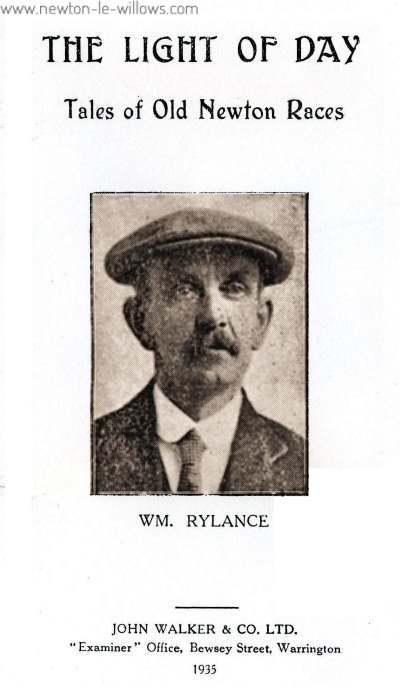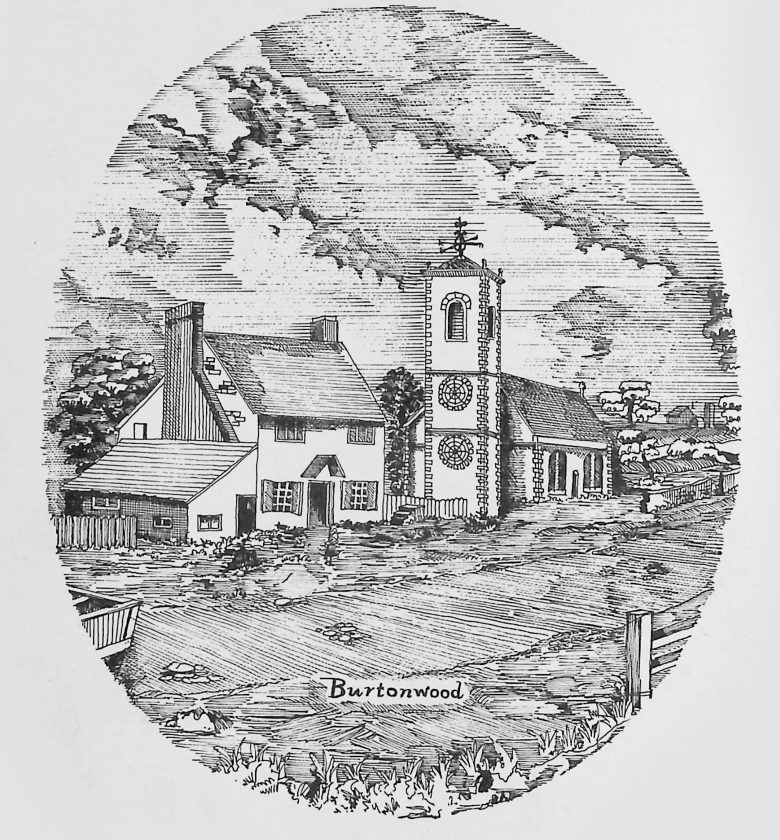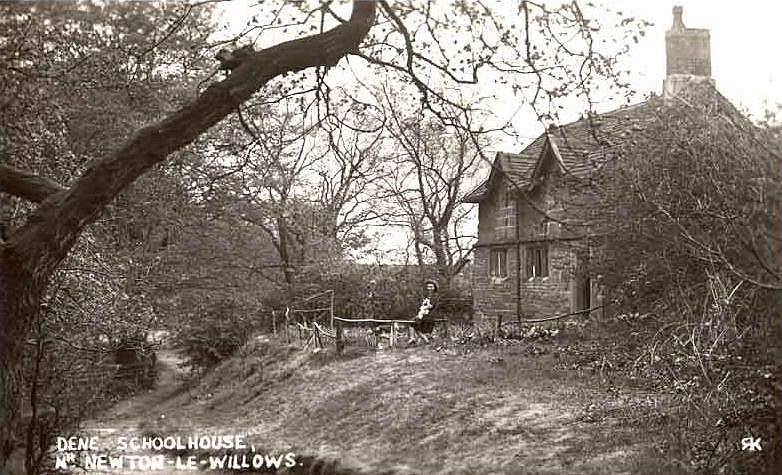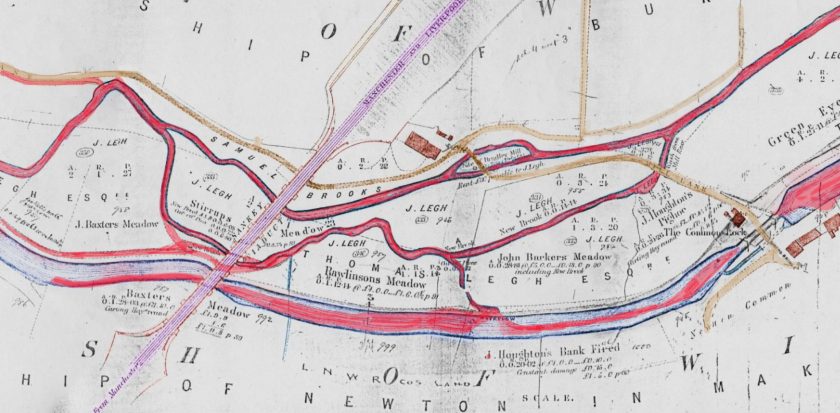“EARLESTOWN MARKET.”
If I lived to be a hundred and wrote of nothing else in my spare time, I wouldnt finish telling you of the incidents, and describing the various characters that visited Earlestown Market. Roughly speaking, the Market Place is about a hundred yards square, not a covered market, bear in mind, just a big, open space, and a man of the name of Bob Carlisle, the champion walker of the world, used to walk round it four times to the mile. Bob would make wagers of walking so many miles in so many hours. He had a blackboard fixed up on the corner of the Market nearest to Billy Mellings Hotel, Market Inn. The referee would sit on a chair and chalk up every time Bob came round, four chalks to the mile. Every evening the state of Bobs progress would be chalked up.
How we used to enjoy walking behind him. It being a goas-you-please contest, many a time as we came out of school, we would walk round with him before going home for our dinner or tea, as the case may be. I dont think Bob ever lost a wager. You see he was such a favourite with the school lads that, when he and the referee went into Billy Mellings for a small lemon, one of us invariably had a piece of teachers chalk in our pocket. I dont suppose Bob was set as hard a task in those days as he would be called upon to do now. Everything and everybody were slow in those days; so you can understand that Bobs feats were not performed with the same speed as, for instance, the roller skaters go at. I believe their speed forces the spectators to hold their hats on, and the camera-men find it impossible to get a slow-motion picture of them. Speed was only a secondary consideration fifty years ago, and Bobs tasks were more of stamina than speed.
He was usually set to walk 600 miles in six days. Start on Monday morning and finish on the Saturday evening. Never varied his speed from start to finish . just ambled along as our present-day hikers do. Quite content he seemed to do the 600 miles, and I have often thought that he could have done 700 at a push. You know, he wasnt walking only twelve hours, twenty-four hours constituted the day. There was no room for Bob Carlisle on the Market at race time, as every inch of the ground was occupied by the various stalls, shows and amusements.
THE “FIRE-EATER.”
He was a big, black negro and every year as the races came round he was to be seen with his frying pan. This ” nig ” worked on his own. He would soon get a crowd round with his shouting and bawling, then set fire to what appeared a pan full of light cotton waste. It would blaze up, then with a fork he would eat it all with a relish, at the same time showing a splendid set of teeth.
I once saw a trick played on him, and Ill bet he never forgot it. Before he set fire to the stuff in the frying pan, he would ask one of us lads to hold the pan, while he went round with his hat. During his collecting on this particular occasion a good dose of cayenne was sprinkled over the contents in the pan. To see the tears roll down that ” nigs ” face was a sight, and how we enjoyed it. Of course, you couldnt expect lads to have any sympathy. Could you? He finished the pan-full off without a tremor, but he couldnt stop the tears, and his big eyes rolled and showed their whites. He usually took two collections at each performance, one before and one after, but not so on this occasion, for he had no sooner finished, than straight to the water tap he flew. Those who werent in the know said the police must be after him. I dont think a camel could have drunk any more water than he did.
“THE SANDSTONE BREAKER.”
Another character who only visited Earlestown Market during race week, was the Sandstone Breaker. This chap did not work on his: own, as he was forced to have a partner on account of the lifting that had to be done. You will notice I have called him the sandstone breaker, which is hardly a correct trade name for him, as you will see. His stock-in-trade consisted of a huge heap of sandstones and a fourteen-pound sledge hammer. Each stone was as much as two men could lift. The strong man, who was stripped to the waist, would take his coat off and then his partner would begin:
“Ladies and gentlemen, here you see the strongest chested man in the world, and by your kind permission and attention he will show you a performance with these sandstones that will astound you. He will lie on his back, I will then ask three or four of you gentlemen to take one of these sandstones, any of them, and place it on his chest. He will then raise his body off the ground, with the sandstone still on his chest, and only his two feet and hands on the ground. Having done that, any man standing around here is invited to take this fourteen-pound hammer and break the stone with it.”
There was no doubt about the strength of the man, as when a stone was laid on his chest, he would easily force his body -up and hold the stone until it was broken by one of the audience. The cap would then go round. It went round every time a stone was broken. They werent all soft sandstones. Ive seen some hard ones that required some slogging at to break them. Never have I seen the man give way at the knees or wrists, although I once saw the hammer slip off the hands of a big Irishman. It was a miracle no one was killed; in fact, no one was even hurt. You see, the man took a swing blow and the hammer flew out of his hands and over the heads of the little knot of onlookers. Of course, they all ducked, but they would have been too late if the hammer had kept low. As it was, the hammer passed harmlessly over them, but when it dropped there was a row. It so happened that there was a ” quack ” doctors stall next pitch to this sandstone man. The hammer found the stall, and you talk about a mess!
Packets of herbs and cough lozenges, bottles of embrocation, boxes of pills, bottles containing tape worms, and glass cases with corns in them, and I dont know what, with one fell swoop the hammer and its long shaft scattered in all directions. That was the only time I saw the sandstone man get up off the floor without the stone being broken. What a, commotion it caused; the old ” quack ” had the ” bobby ” there before you could say ” Jack Robinson,” claiming that the sandstone man was liable for all the damage.
Of course, the sandstoner said the Irishman was responsible for letting the hammer slip. When the Irishman was confronted with it he replied: ” No doubt the hammer slipped, but come now, lets have another try, and Ill spit on me hands this time.” “No more tries for you, Paddy,” said the sandstoner. ” And for why?” asked Paddy. “Well,” replied the sandstoner, “you might miss the stone the next time.”
We leave them settling the dispute, and the next little group we come across, is watching a man performing feats of strength, which would have done credit to any music-hall stage. There was any quantity of these open-air side-shows on the Market, and the artistes depended on what they got in the hat.
This strong man could juggle with iron balls as easily as you see them juggle with billiard balls. He always finished his little performance by the same item, which was in this manner: An iron cup about three inches inside diameter, with the base hollowed to fit his forehead, to which it was firmly fastened. He would then take an iron ball, pitch it high up in the air and catch in the cup. It was a tight fit in the cup and there was no fear of it bouncing out. He never had any occasion to ask the crowd to stand away and give him room to throw the ball up, neither did he always throw it up straight; yet I never saw him fail to catch it.



